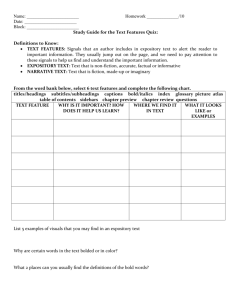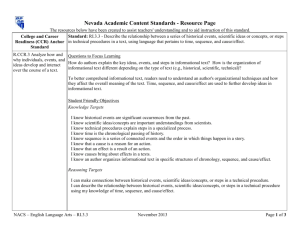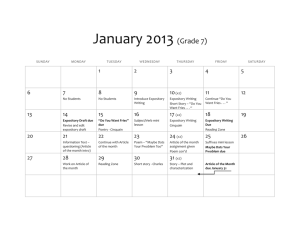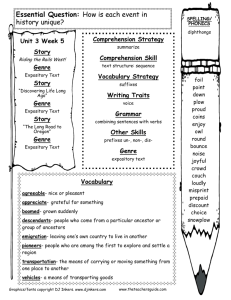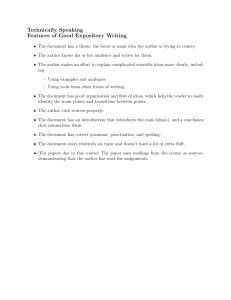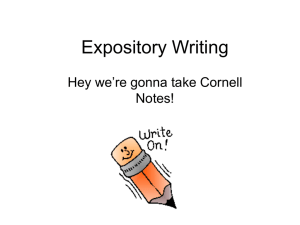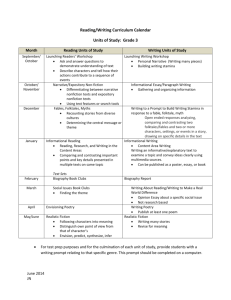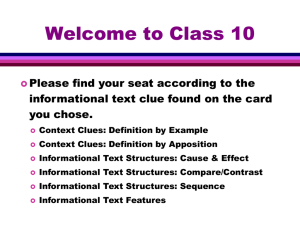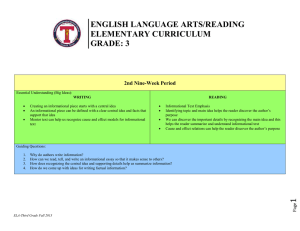Expository Text Structure
advertisement
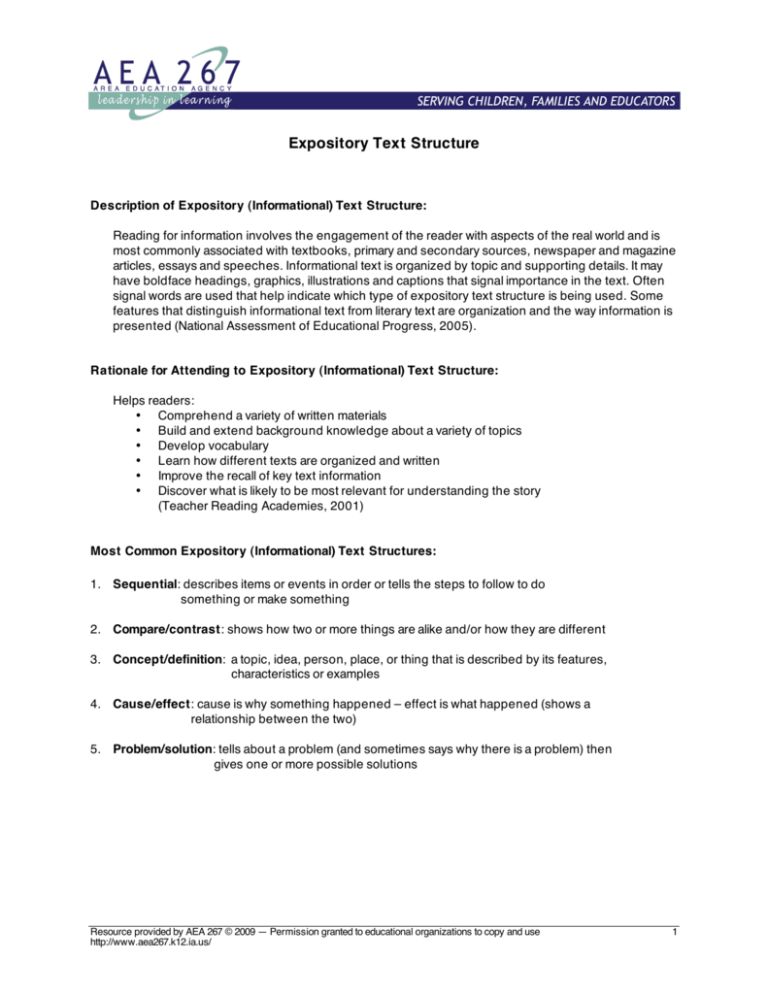
Expository Text Structure Description of Expository (Informational) Text Structure: Reading for information involves the engagement of the reader with aspects of the real world and is most commonly associated with textbooks, primary and secondary sources, newspaper and magazine articles, essays and speeches. Informational text is organized by topic and supporting details. It may have boldface headings, graphics, illustrations and captions that signal importance in the text. Often signal words are used that help indicate which type of expository text structure is being used. Some features that distinguish informational text from literary text are organization and the way information is presented (National Assessment of Educational Progress, 2005). Rationale for Attending to Expository (Informational) Text Structure: Helps readers: • Comprehend a variety of written materials • Build and extend background knowledge about a variety of topics • Develop vocabulary • Learn how different texts are organized and written • Improve the recall of key text information • Discover what is likely to be most relevant for understanding the story (Teacher Reading Academies, 2001) Most Common Expository (Informational) Text Structures: 1. Sequential: describes items or events in order or tells the steps to follow to do something or make something 2. Compare/contrast: shows how two or more things are alike and/or how they are different 3. Concept/definition: a topic, idea, person, place, or thing that is described by its features, characteristics or examples 4. Cause/effect: cause is why something happened – effect is what happened (shows a relationship between the two) 5. Problem/solution: tells about a problem (and sometimes says why there is a problem) then gives one or more possible solutions Resource provided by AEA 267 © 2009 — Permission granted to educational organizations to copy and use http://www.aea267.k12.ia.us/ 1 Expository Text Structure Signal Words Sequential Compare/Contrast Concept/Definition Cause/Effect Problem/Solution What items, events or steps are listed? Do they have to happen in this order? Do they always happen in order? What things are being compared? In what ways are they alike? In what ways are they different? What specific topic person, ides or thing is being described? How is it being described (what does it look like, how does it work, what does it do, etc.)? What is important to remember about it? What happened? Why did it happen? What caused it to happen? What is the problem? Why is this a problem? Is anything being done to try to solve the problem? What can be done to solve the problem? first same/different colors since question next like/unlike sizes because answer last either . . . or number as a result of thus before yet sounds if . . . then accordingly afterwards different from characteristics in order to decide another same as may be due to solve/resolve finally similar to effects of fix initially as opposed to therefore remedy when instead of preceding although for this reason following however thus words that create a picture in your mind descriptive adjectives adverbs (ly words) quickly, quietly position words (below, near, on) consequently compared with as well as Resource provided by AEA 267 © 2009 — Permission granted to educational organizations to copy and use http://www.aea267.k12.ia.us/ 2 Resource provided by AEA 267 © 2009 — Permission granted to educational organizations to copy and use http://www.aea267.k12.ia.us/ 3
